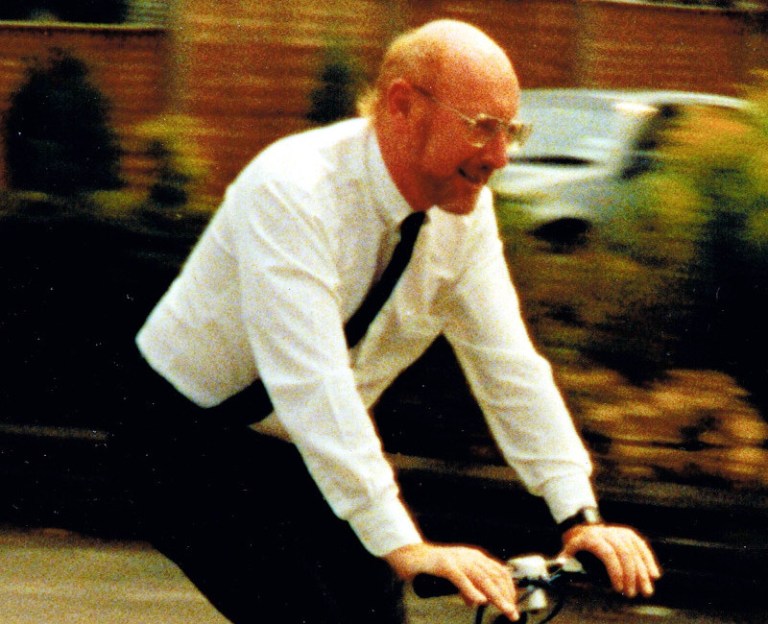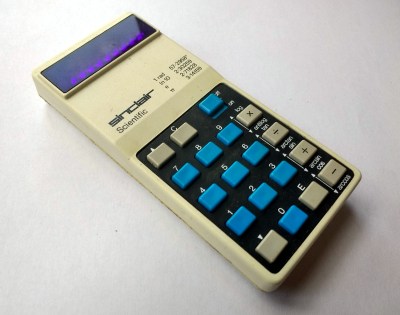3 Likes
1 Comments
When A Single Bit Was Enough, Into The Sound Of The #ZXSpectrum | Hackaday ⚓ https://hackaday.com/2022/01/20/when-a-single-bit-was-enough-into-the-sound-of-the-zx-spectrum/ ䷉ #hackaday #8bit


It is with sadness that we note the passing of the British writer, engineer, home computer pioneer, and entrepreneur, Sir Clive Sinclair, who died this morning at the age of 81 after a long illness. He is perhaps best known among Hackaday readers for his ZX series of home computers from the 1980s, but over a lifetime in the technology industry there are few corners of consumer electronics that he did not touch in some way.
Sinclair's first career in the 1950s was as a technical journalist and writer, before founding the electronics company Sinclair Radionics in the 1960s. His output in those early years was a mixture of miniature transistor radios and Hi-Fi components, setting the tone for decades of further tiny devices including an early LED digital watch at the beginning of the 1970s, miniature CRT TVs in the '70s and '80s, and another tiny in-ear FM radio which went on sale in the '90s.
 The Sinclair Cambridge Scientific calculator.
The Sinclair Cambridge Scientific calculator.
At the start of the '70s he took on the emerging mass-market calculator world with yet more miniaturisation by the use of button cells rather than bulky dry cells, and then with scientific calculators at a low price thanks to extremely clever reprogramming of a more mundane calculator chip. As calculators became commoditised his inevitable next step was into the world of computing which from modest beginnings led to the hugely successful ZX series of machines with 1982's ZX Spectrum as one of the most popular British computers of all time. These machines made clever use of an Uncommitted Logic Array chip to reduce their device count, and though they lacked the advanced features of their more expensive competitors their sub-£100 price made them an easy choice for cash-conscious parents. There was an array of Sinclair peripherals including a miniaturised tape storage device, as well as a huge ecosystem of third-party hardware and software.
Through the 1980s the computer business foundered and was sold to rival Alan Sugar's Amstrad, though the Sinclair inventing streak remained undimmed. His C5 electric vehicle was a commercial failure, but it led to his producing a range of electric bicycle add-on products into the '90s that forestalled today's electric bike boom by several decades. He wasn't quite finished with computers though, as his Cambridge Z88 of 1987 was an LCD portable that ran from AA batteries and provided useful on-the-road office facilities.
Aside from an array of always interesting but sometimes under-engineered technology products, Sir Clive's true legacy lies in the generations who benefited from his work. Whether he introduced them to electronics in the 1960s through his writing, or introduced them to computing in the 1980s though the magic of Sinclair Basic, he delivered the impossible straight from science fiction to an affordable Christmas present. There is a whole cohort of engineers and software developers in the UK and other countries whose first experience of a computer had a Sinclair logo and who learned about memory mapping the ZX way. For us Sir Clive's companies and products provided a career and a lifelong interest, and there will be few other individuals with such a lasting effect on us. Clive Sinclair, thank you!
Header: Mark Sanders, CC BY-SA 4.0.
#featured #interest #news #retrocomputing #clivesinclair #obituary #sinclair #zxspectrum #zx80 #zx81
A Lemmings type game for the ZX Spectrum, THE HUMANS
I really like the 8x8 pixel animation of the humans, and the graphics work well with the color clash limitations of the Spectrum. A C64 port wouldn't be too hard.
http://www.indieretronews.com/2021/08/the-humans-rather-nice-25-level.html#more
One of the things I like about "retro" computing are the books of the
era. There were a ton of books of varying quality, but the good ones
really dove into the internals of what was going on with the machine.
"Mapping the Atari" by
Ian Chadwick was one such book where Ian spent a lot of time checking to
see what various peeks and pokes did on the Atari machine (Atari didn't
see fit to provide a lot of documentation about the machine unless you
gave them some serious cash). Conversely the Commodore and Sinclair
machines were well documented by their creators. This allowed for more
in-depth books about the machine (and even books with the complete
source code of the machine, such as Complete Timex TS1000/Sinclair ZX81
ROM
Disassembly
and The Complete Spectrum ROM
Disassembly.
Understanding Your
Spectrum
is a fantastic book that I wish was available (much like the ZX Spectrum
itself) in the USA when I was learning. It not only covers the basics of
the machine (what hooks to what, what the board layout is) but then
explores the operating system of the machine. I don't recall this level
of depth in many books that I saw in the wild when I was growing up ,
and I'm not sure I would have known what to do with them (I didn't have
nearly as much knowledge about computers as I do now) but I would have
appreciated at least this level of detail. It really pulled back the
mystery of what was going on in the machine.
It got me thinking that many of today's machines would benefit from this
deep-level dive. I know there were books that gave a cursory overview of
the internals of the machine but having an expert guide like Dr. Ian
Logan who can explain what's going on with the machine would be a huge
help. It's not that we need documentation; we need explainers to
understand what we're looking at.
So here's to Dr. Ian Logan's "Understanding Your Spectrum", one of the
great tour-guides that helped make the ZX Spectrum an exceptional
machine.
http://decafbad.net/2021/06/12/understanding-your-spectrum-by-dr-ian-logan/
#misc #Adayinthelife #Computers #ZXSpectrum
I still read books and sometimes they are about computers. Mel Croucher is always a good choice and even as I do play the Deus Ex Machina game occasionally, this book is just a plain good read. And the other one? Well, after all those years having just a B&W photocopy of the SamCoupe User's guide, I just had to buy a brand new one in a hardback!
#zxspectrum #speccy #samcoupe #sam-coupe #8bit #book #books #reading
Well, today it's 35 years from introducing the Sinclair ZX Spectrum. It's still alive today and hopefully will live on for a long time. Happy birthday!
#zxspectrum